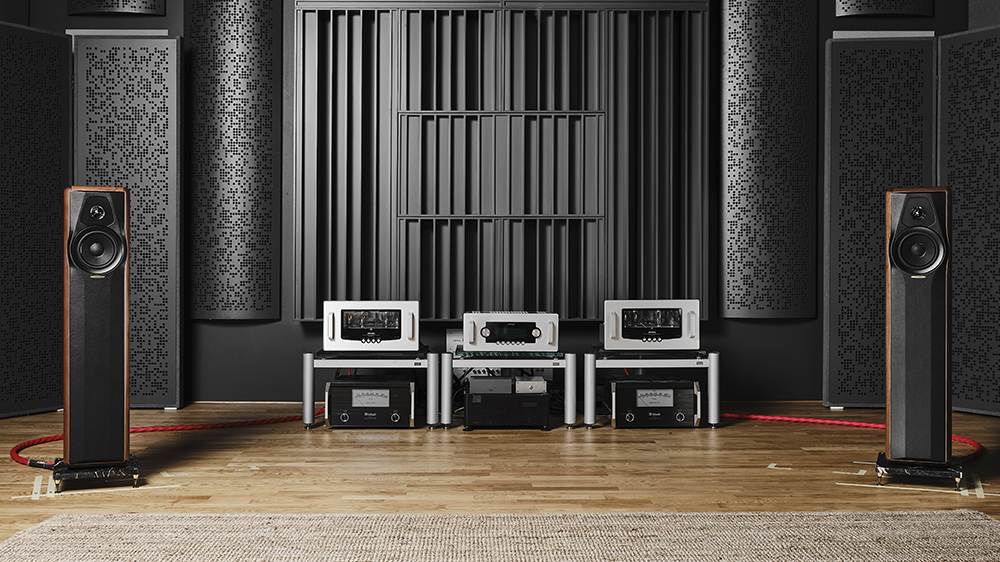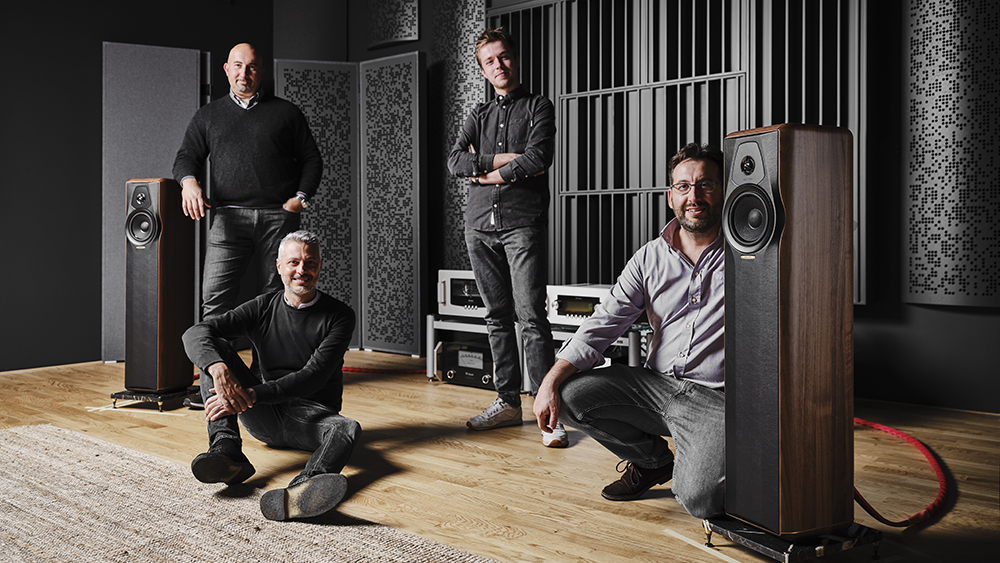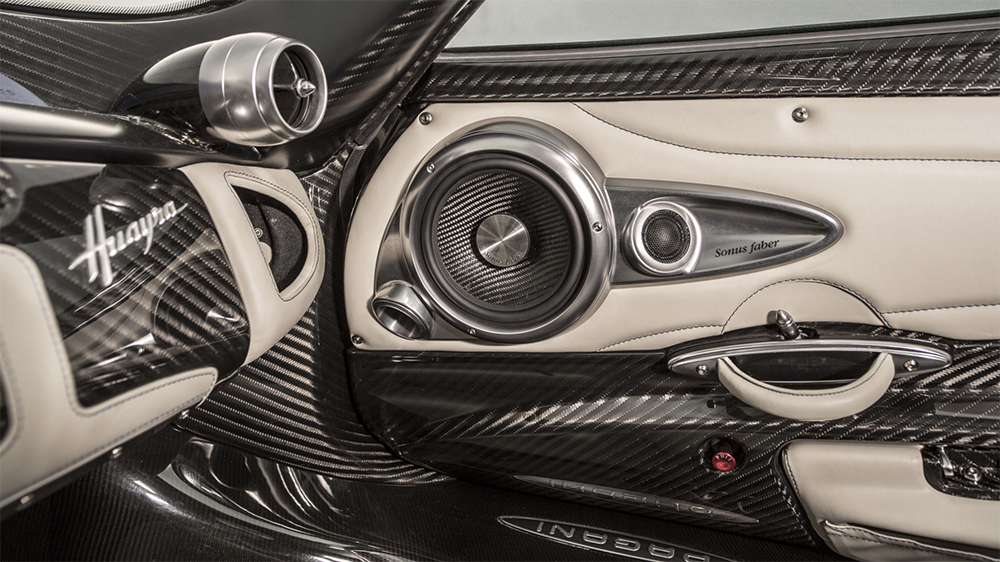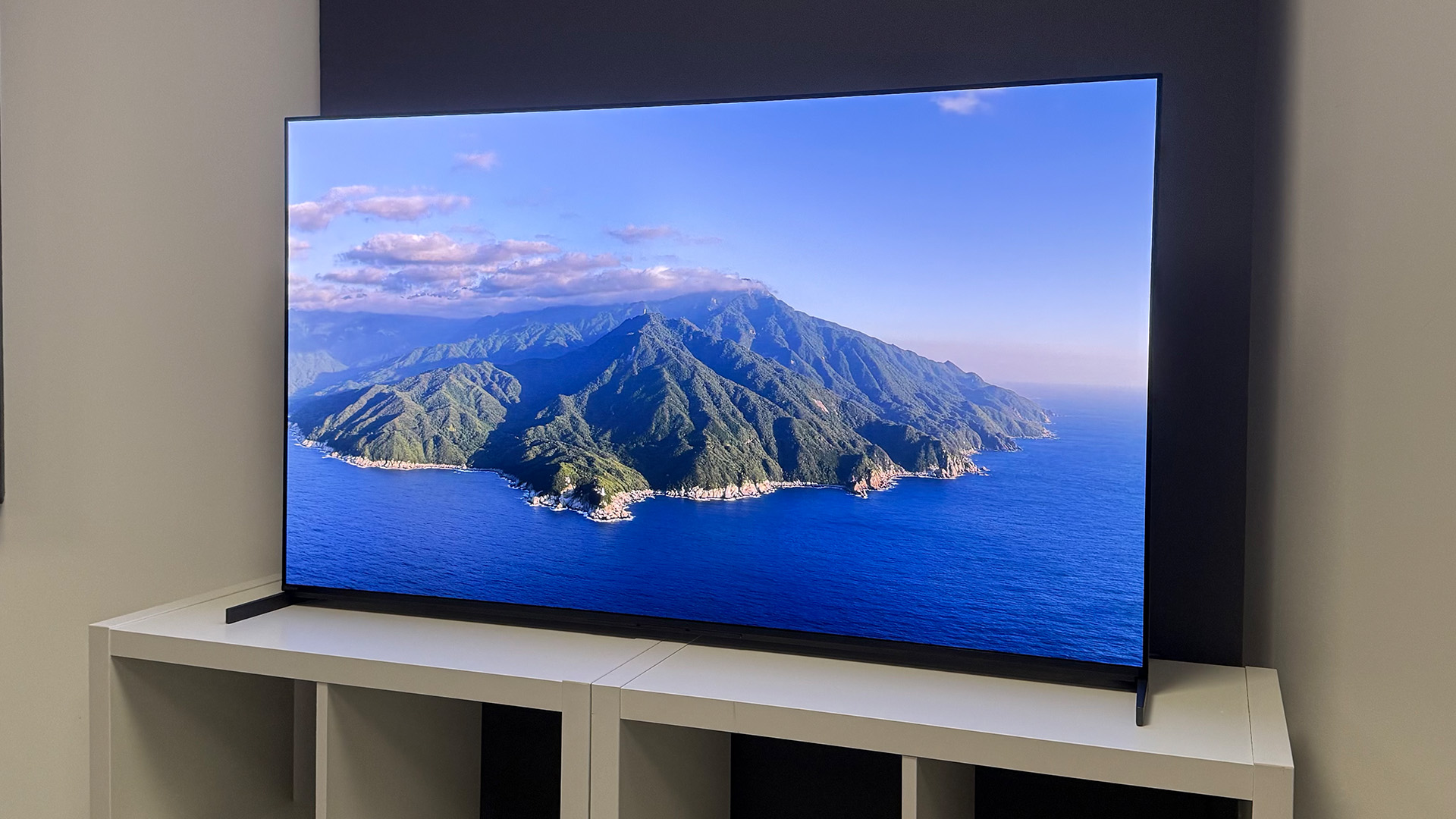McIntosh and Sonus Faber presidents talk COVID-19 impact, brand DNA, and the return to automotive
We (virtually) sit down with McIntosh Labs’ Charlie Randall and Sonus Faber’s Jeff Poggi

Both McIntosh and Sonus Faber have long, rich heritages that have become synonymous with high-end audio excellence – McIntosh for its extensive range of discerning electronics, Sonus Faber for its premium line of Italian-crafted speakers.
The former was founded in 1949 near Washington DC, while the latter surfaced just over 30 years later in northern Italy. But despite being oceans apart, their common ground is defined by their ownership by US holding company McIntosh Group (formerly Fine Sounds Group), which also owns Sumiko and Wadia Digital.
In light of the brands’ recent in-roads into the automotive hi-fi market, and the apparent boom brought by the COVID-19 global pandemic, we spoke to McIntosh Labs’ Charlie Randall and Sonus Faber’s Jeff Poggi about the importance of brand identity, the pandemic’s impact on the market, and the future of hi-fi...
COVID-19 and the new ‘home economy’
The COVID-19 pandemic has decimated many businesses, but one flicker of light amongst the gloom has been the success of many hi-fi and AV brands as people have spent more time and also more money at home this year.
“There is a new home economy that has developed with COVID-19,” says Poggi. “Consumers are spending more time watching movies and enjoying music at home, which has been a boom for speciality retail and custom installation. While COVID-19 has been devastating for live entertainment, it has driven growth for our home audio business. Even with all the COVID-19 challenges, we have had our best summer in the company’s history – we are seeing double-digit growth across all global regions and across all product lines.”

This is one of the reasons the McIntosh Group, which includes the Sonus Faber and McIntosh brands, recently took over its own distribution in the UK, with the launch of Fine Sounds UK.
“COVID-19 has been good for our business worldwide,” adds Randall. “As people are staying home, they’re more inclined, to spend on home renovations, including installing or upgrading their home theatre or sound system. Just as COVID-19 hit different regions, from a timing perspective, those that rebounded quickly were the ones that were hit first. In Asia, Europe and the US, we saw demand for products pause and then grow based on the region’s status with the pandemic.”
The latest hi-fi, home cinema and tech news, reviews, buying advice and deals, direct to your inbox.

But will it last? “I’m not worried so much that they will tail off; more excited about the fact that audio seems to be very much in the mind of consumers right now,” says Randall. Poggi shares that sentiment: “I believe there has been a fundamental reset in consumer behaviour that will outlast the pandemic. Movie theatre chains are going bankrupt, new release movies are being introduced via streaming and customers have fallen in love with their turntables. All of this bodes well for home theaters, media rooms and hi-fi systems.”
For those fortunate enough not to be directly affected, this year has seen a return to the simple things and a focus on wellbeing, which for many hi-fi fans has meant more time at the hands of their system. “Though it is terrible to be in such circumstances, I’m glad that people are able to enjoy music at home with their loved ones,” says Poggi. “I know I’ve enjoyed revisiting several favourite albums with my family.”

The future of electronics: more of the same?
With the future of many industries uncertain and questions over whether the pandemic could usher in a more permanent ‘new normal’ daily life, hi-fi seems to be taking a more steady trajectory. Randall is confident that vinyl, CD and streaming will continue to define people’s listening habits for the next decade – and that McIntosh’s future catalogue will reflect that.
“There is something romantic about vinyl, it's satisfying to open the album jacket, look at the artwork and read the liner notes while listening to the album. That's something that today's digital files just can't replace. And CDs will stay around for a long time, simply due to the large libraries people have acquired. I can't say for sure if we'll still be making CD players in 2030, but I'm confident McIntosh CD players will still be used. With that in mind, I do think streaming is here to stay,” says Randall. “With the constant advancements in streaming technology and platforms, we'll always be working to develop new products that incorporate these advancements.”
McIntosh’s amplifier catalogue is extensive, with valve and solid-state models present alongside integrated hybrid designs that combine vacuum tube preamps and solid-state power outputs. As for the future of amplification, Randall says: “At its core, a Class AB analogue amplifier will not be radically different, but you'll see more natural changes between now and 2030. For now, I don’t see it as an issue as the power consumption requirements are for when the unit is in standby. However, Class D does have its benefits when trying to put many channels in a single chassis with a small form factor [and for that reason] McIntosh has two amplifiers in the line up: our MI128 and MI254 both use Class D topology.”
Randall is also confident about the continuing relevance of hi-fi separates in light of the thriving system concept: “Many music lovers will always want separates, too. Everyone's hearing is subjective, and no one can ever truly hear how someone else hears a piece of music. That's why we offer a full line of separates as well as a full line of integrated amplifiers.”

Randall: “I will have to pick two and that’s not easy to narrow down. The MC275 because of its nostalgia and the fact that it has been in and out of our line-up since 1961. The second would be the MC901 because of its unique design being a dual mono amp with one amp 600W Sold State and the other 300W amp vacuum tube.”
Innovating while staying true to one’s identity
Key to any successful brand is a distinct identity, and McIntosh and Sonus Faber both have their DNA running through each and every product – the glass panel and blue meters in McIntosh kit, the reliance of wood and other natural materials in Sonus Faber speakers. What is clear in both brands’ vision is the value in sticking to their identities.
“Our customers are music lovers who appreciate the finer things in life, and our products are truly timeless – often considered family heirlooms, passed down from generation to generation,” says Randall.
“There is a great sense of pride in owning a McIntosh and we have a great sense of pride in being a part of that journey and producing these quality pieces that are built to last a lifetime. Truly our DNA lies with the people that are behind the brand; the design team has an average tenure of 24 years,” he adds.
“Sonus Faber is known for building products that produce sound using natural materials, Italian craftsmanship and a commitment to tradition,” says Poggi. “Our roots in the Vicenza region have allowed us to connect with local artisans, inspired by the meticulous process of building the best violins and violas in the world. We are focused on producing the best possible loudspeakers with authentic materials – wood, leather, marble – as we believe they help us achieve the most natural sound. That’s why we use silk-dome tweeters and wood-pulp blended mid-range cones.”
Would the brand consider moving away from wood as a cabinet material? “Fundamentally, wood is part of the Sonus Faber DNA, going back to our history,” Poggi says. “However, we also look to other materials if it means advancing our goal to achieve natural sound using newer technology. For example, carbon fibre was a key material used in our 30th anniversary Extr3me.”

Sonus Faber has recently invested heavily in its R&D facility in Vicenza. Its new acoustic development lab has been kitted out with an updated anechoic chamber, new testing instrumentation, computer-aided modelling software and acoustic engineering talent – not to mention two listening rooms capable of two-channel and Dolby Atmos home theatre reproduction.
“I believe in incremental innovation and one of my favourite sayings is ‘crawl, walk, run’,” says Poggi. “We take time to develop our Damped Apex Dome (DAD) tweeter, Stealth Reflex port, Zero Vibration Transmission mechanical systems that provide true value to the products. By focusing on each element of the transducer – cone, spider, magnet, frame – we can make the next-generation driver better than the current one. And if we apply this to all aspects of the product – transducers, crossover, cabinet – we can improve our products significantly. It’s a process that should not be rushed.”
The newly-launched Lumina series epitomises that balance of innovating while retaining its identity – in this case, channeling technologies into more accessible packages. “We wanted to allow a larger group of listeners the opportunity to enjoy Sonus Faber,” says Poggi. “It has a multi-layer wood veneer front baffle with a leather wrapped cabinet that is both rigid and beautiful. Our soft silk-dome tweeter is fitted with our DAD technology to provide natural highs that extend beyond 20kHz. The front-firing reflex port delivers deep bass extension in a compact design. And as with all of our products, Lumina is made in our Vicenza factory by our highly skilled craftsmen."
So how about innovating into other products? Sonus Faber was once a purveyor of headphones, of course, and you could reasonably believe its family ties with McIntosh could lead it down the electronics path.
“New products are our passion. Our team has immense creative capabilities which far exceed our product development capacity,” says Poggi. “But to ensure that we deliver high-quality products that fulfil our brand values, we need to focus our development efforts on a few products at a time. Sonus Faber produced an all-in-one speaker, the Snail, and integrated amplifiers, Quid and Musica, in the 1980s and early ‘90s. So you can bet that our creative team is inspired by these past achievements and is looking for ways to bring new Sonus Faber products to market.”

Poggi: “I’d say I’m most proud of the Electa Amator III. I feel it best represents the core DNA of the Sonus Faber brand of today. Sonus Faber was most known for the amazing two-way loudspeakers produced in the 1980s and 90s – the original Parva, Electa, Minima, and Electa Amator. We reimagined the Electa Amator in a modern way, building upon the classic tradition of a two-way loudspeaker housed in a solid wood cabinet, and we introduced our new technologies, such as our latest natural silk soft-dome tweeter with Damped Apex Dome (DAD). Then we added luxurious touches, like a solid marble base and brass insert that give the product a refined look.”
A ready return to automotive
One growing area for both McIntosh and Sonus Faber is in the in-car audio market. Faber has teamed up with Maserati to supply the sound system for its upcoming MC20 super sports car and Pagani for the Huayra, while McIntosh has recently kitted out Jeep's Grand Wagoneer Concept. The two brands have also partnered with OEM component and system supplier Alps Alpine to develop speakers and amplifiers, with engineers working together to tune systems for cars that should arrive next year.
“Maserati and Sonus Faber is a perfect brand fit – high-end performance, luxurious details, a refined Italian design and artisanal methods. We have spent three years working side-by-side with Maserati to develop a custom sound system that seamlessly integrates into the passenger cabin. Our ‘Voice of Sonus Faber’ technology is integrated into the system design with co-located all-natural mid-range driver and silk-dome tweeter. Our technicians have tuned the system to have the same tonal characteristics that have defined our Sonus Faber Natural Sound.”
While the in-car market is fresh ground for the Italian loudspeaker brand, the electronics giant is treading familiar territory, having introduced a line of automotive products in 1994 for the likes of Harley Davidson, Ford and Subaru. So why the return now?
“Since we left in the late 2000s, people have been asking us when we’re going to get back into automotive. We felt the timing and opportunity with Alps Alpine was right. Teaming up with them is the perfect avenue for us to return to automotive,” says Randall.
“We sent a large McIntosh home audio system to the Alpine lab where engineers could study the sound and implement our system into their vehicle’s cabin. Our teams have been working to make sure nothing is missing from the McIntosh experience and that our standards for value and sound quality are met. We have also shared McIntosh Proprietary IP to be used in both the amplifier and speakers, as well as participating in the sound tuning of the vehicles.” Watch this space, then.
MORE:
20 of the best live albums to test your speakers
14 of the longest-running hi-fi brands still going strong today

Becky is a hi-fi, AV and technology journalist, formerly the Managing Editor at What Hi-Fi? and Editor of Australian Hi-Fi and Audio Esoterica magazines. With over twelve years of journalism experience in the hi-fi industry, she has reviewed all manner of audio gear, from budget amplifiers to high-end speakers, and particularly specialises in headphones and head-fi devices.
In her spare time, Becky can often be found running, watching Liverpool FC and horror movies, and hunting for gluten-free cake.
